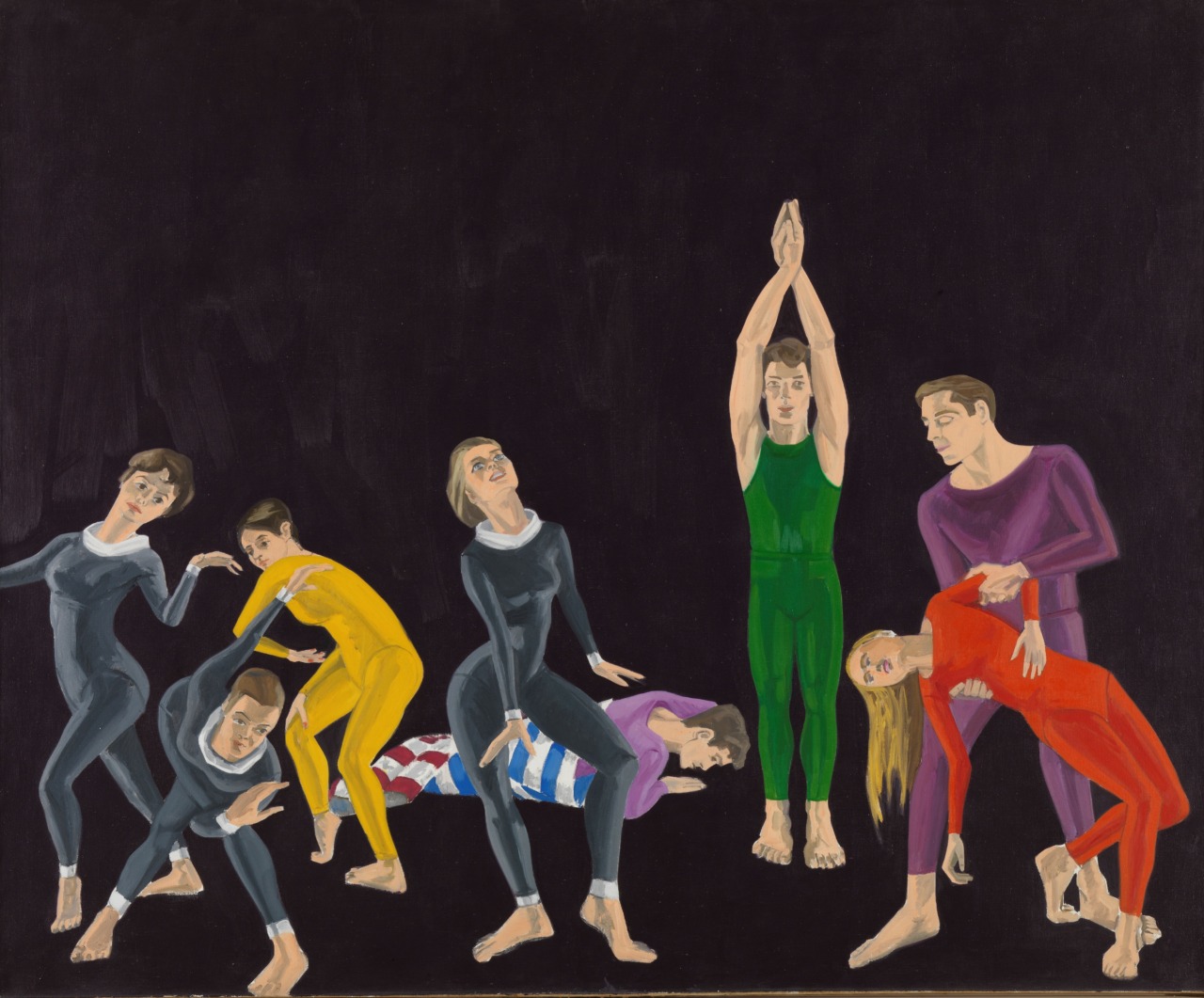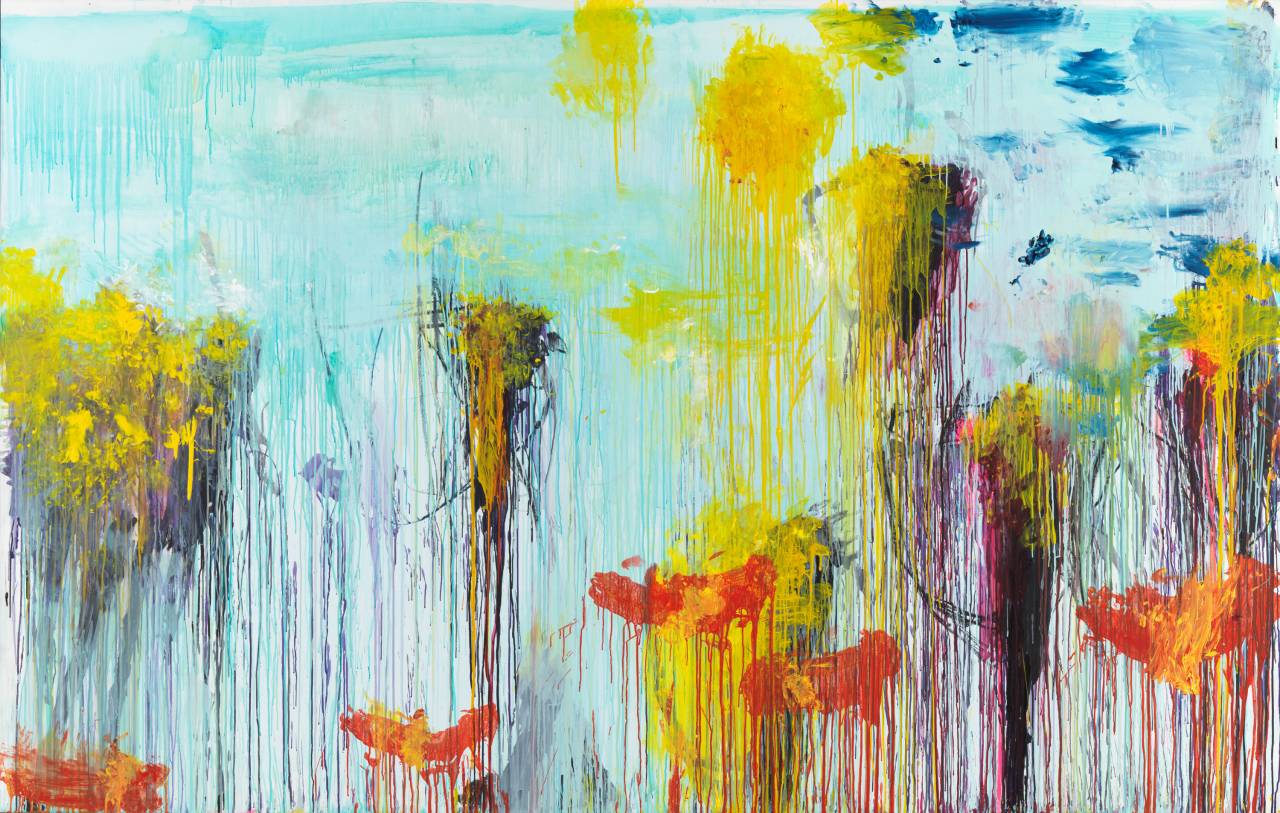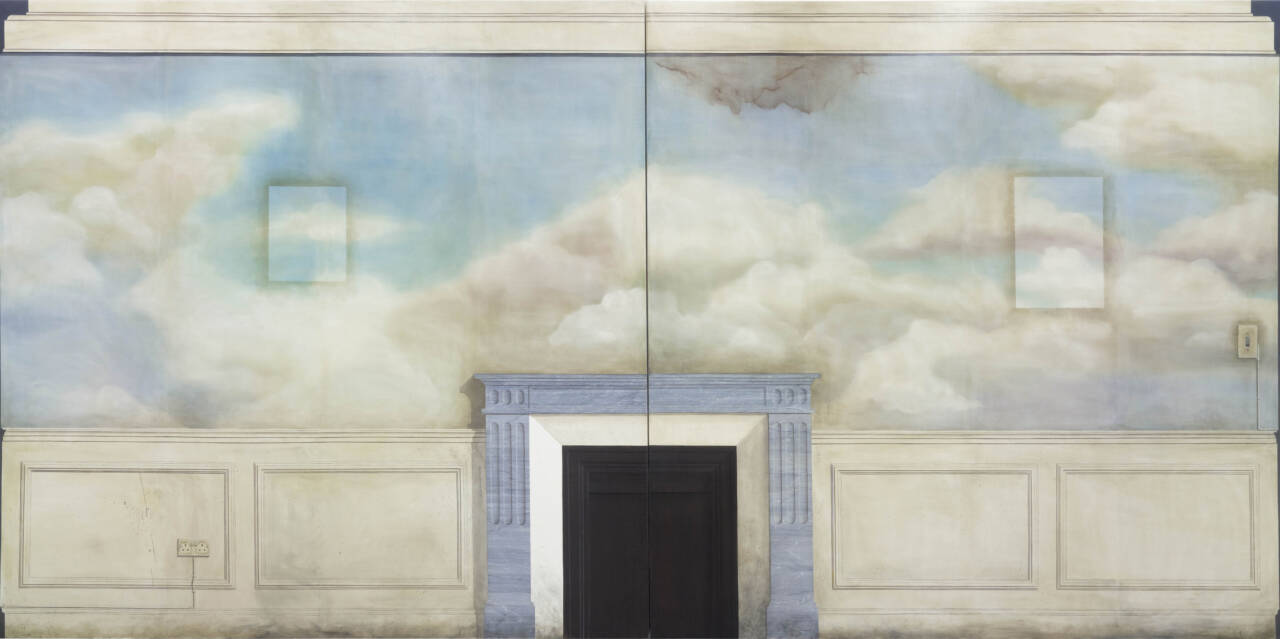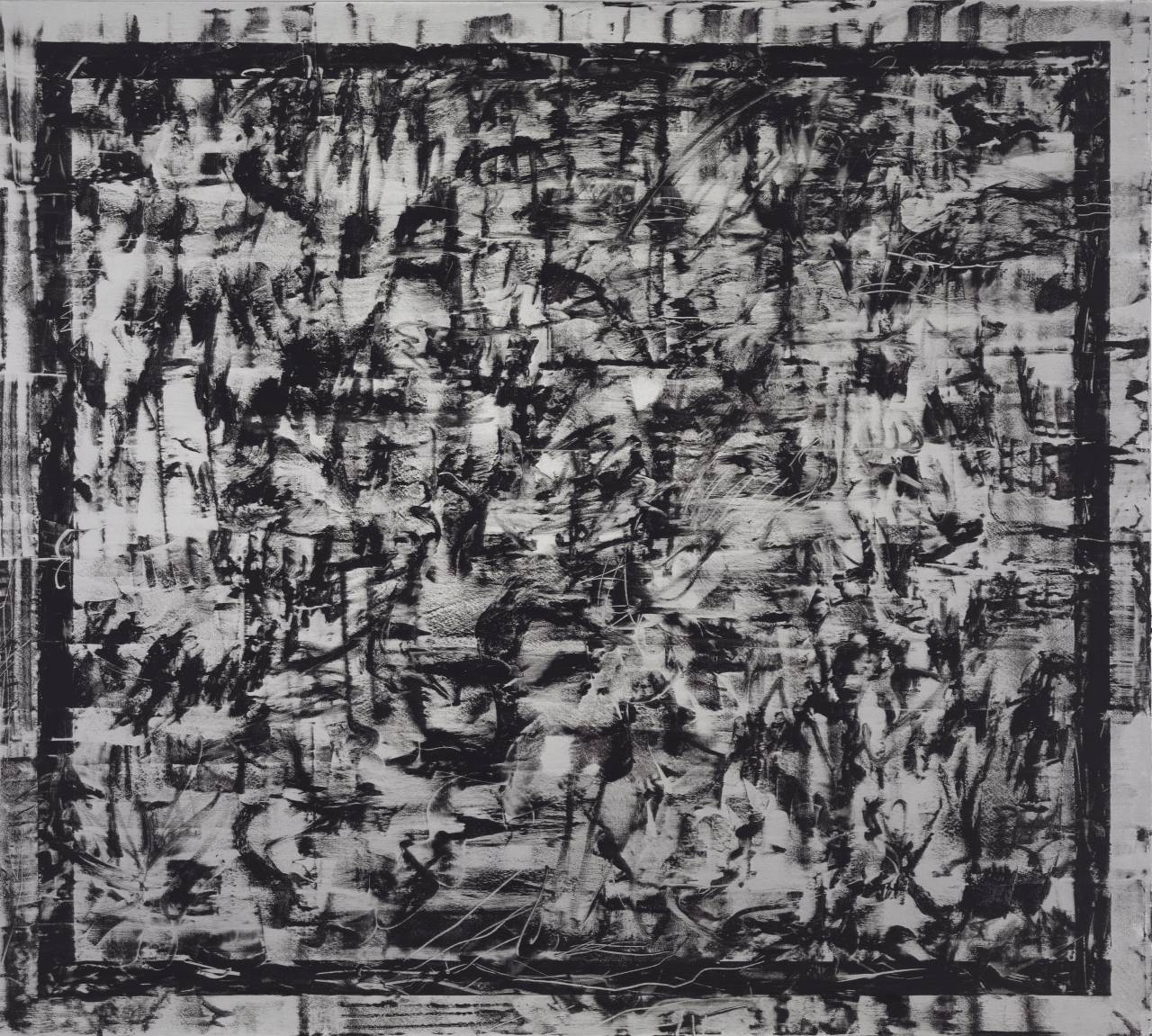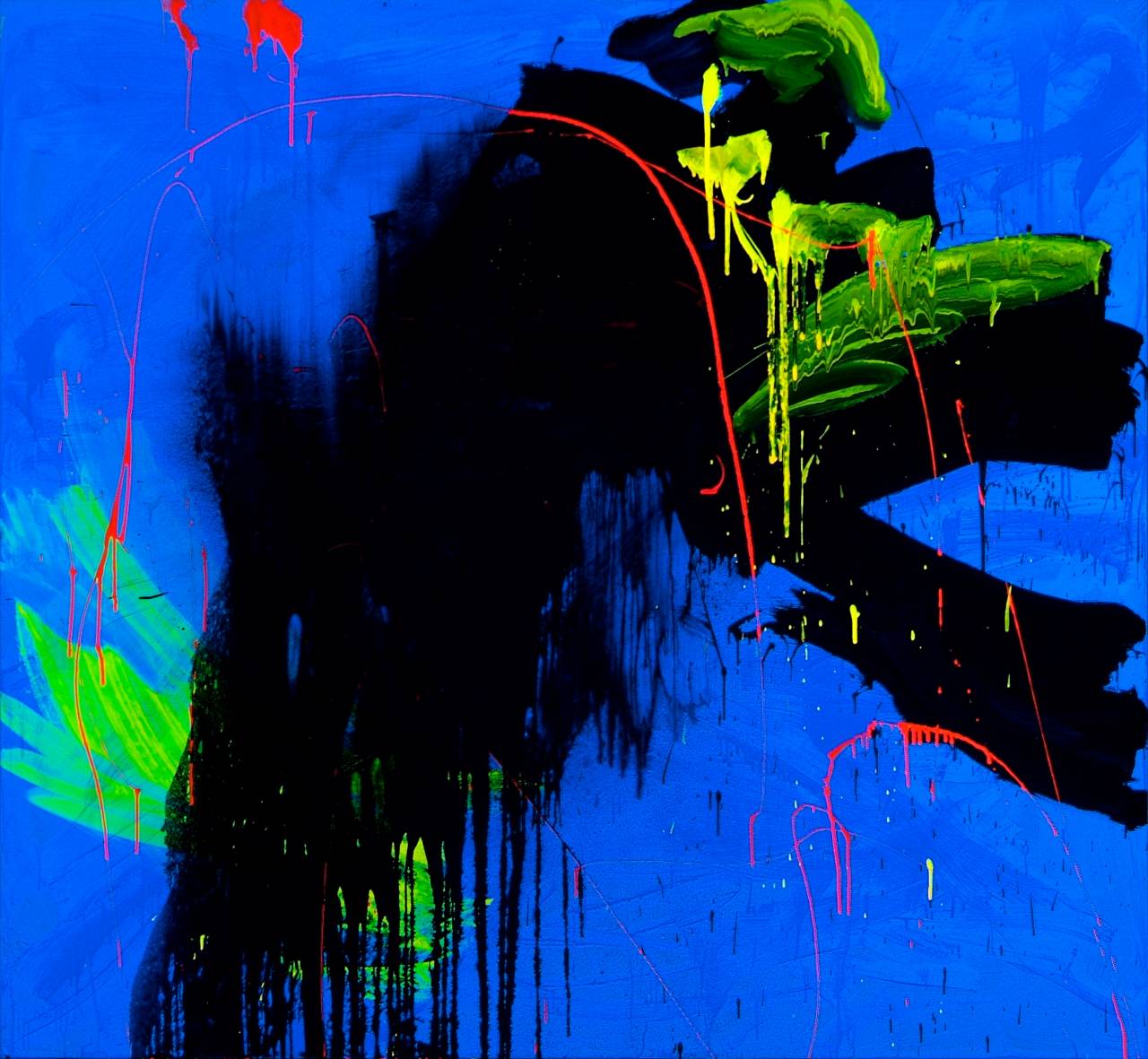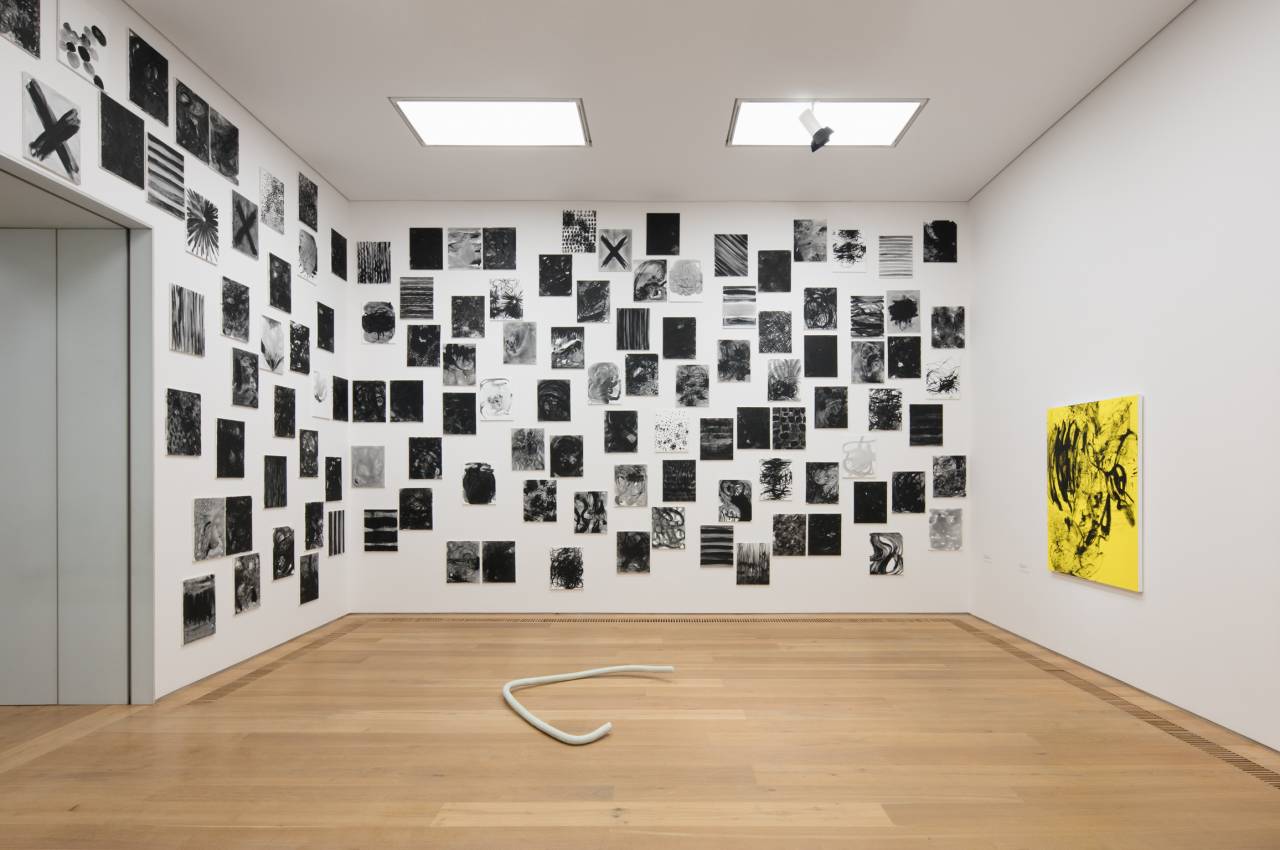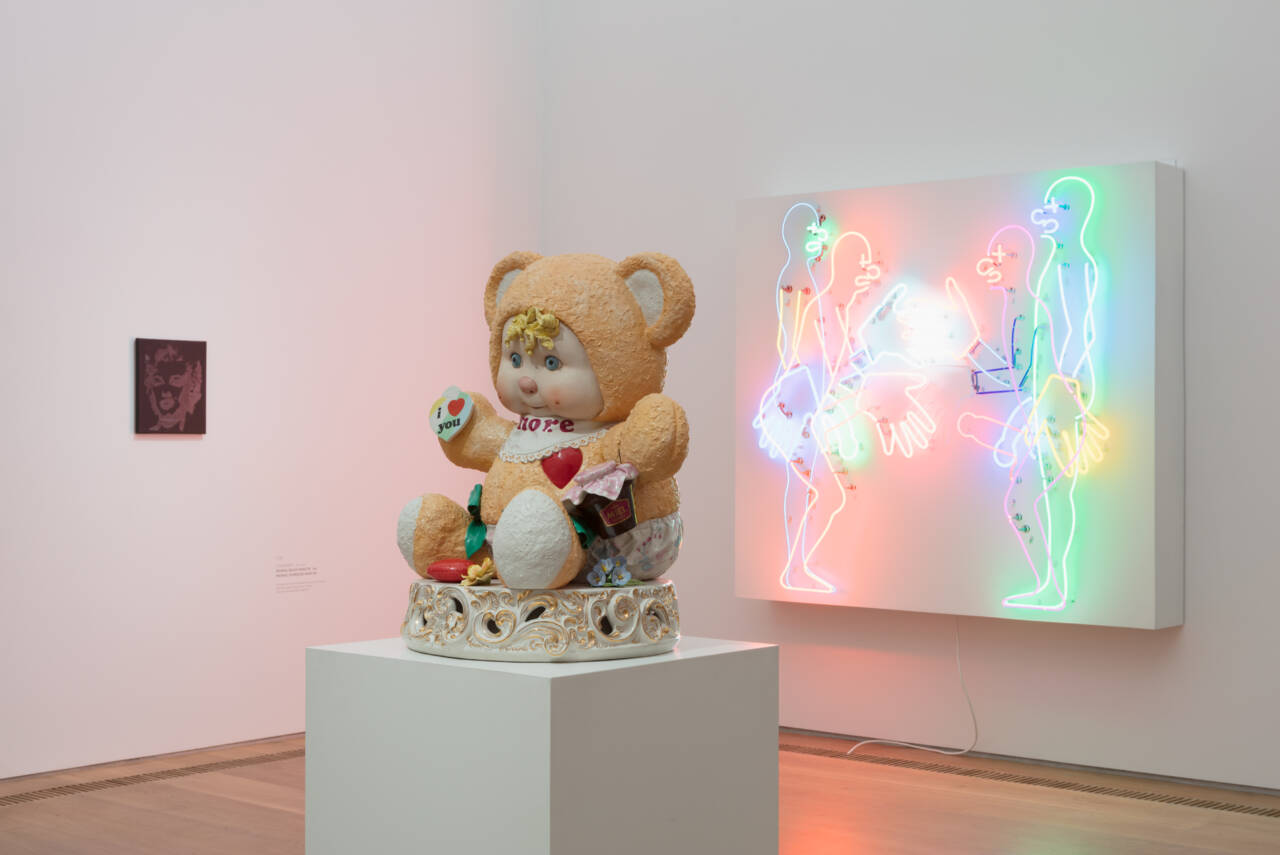Lucy McKenzie: “Caressing Someone’s Cheek with Your Paintbrush”

Introducing text
Lucy McKenzie speaks with curator Jacob Proctor about her upcoming survey exhibition at Museum Brandhorst and the constructive desire to be in the skin of something or someone that you find exciting.
Interview
Jacob Proctor: Lucy, obviously you have done a plentitude of museum shows over the years. But those shows have always been about presenting new bodies of work. How has it been to think about this show, which really goes back to the very beginning in a more systematic way?
Lucy McKenzie: Well firstly, whenever I did those projects, they were made in a complete fever dream of excitement, a kind of frothy frenzy of hysteria. And so it is strange to do a show which doesn’t have that kind of dimension. But I am very happy to look at everything with a little bit of distance and just think about what you can read in the work today that I couldn’t read at the time, because certain themes have emerged and certain things have fallen away. It is a really enjoyable experience to think about what it is that actually connects all these things. What connects Tintin with the Olympic Games with Art Nouveau and trompe l’oeil? That is a real puzzle, but it is my puzzle and it feels great to have the chance to really piece all these things together and try to solve it.
In general, mixing things up and changing perspective has always been very important to you. You seem to enjoy working collaboratively, exploring new professional areas and genres. In the past twenty years, you have run a gallery, a bar, and a record label; you went back to school to study decorative painting; you have at various points immersed yourself in the genres of crime stories, comics, and architectural drawing. Also, 13 years ago, you started Atelier E.B. with Beca Lipscombe, presenting your first collection in 2011 and periodically ever since. While pursuing all these collaborative projects successfully, you never became a fashion designer, a crime author, or a music producer per se. It rather feels like you enjoyed the analysis of or confrontation with different aesthetic professions, as it enabled you to explore a kind of productive friction between those different systems. How would you say that these forays into other fields and collaborative practices have changed your relationship to your solo practice?
On the one hand, it has thrown everything into sharp relief, both the positives and the negatives. A more collaborative and sharing practice has always been important to me as a counterbalance to the more studio-intensive things that I create on my own. It can be super lonely just making these incredibly detailed paintings. So I have always needed that balance of also doing things that have a different set of criteria, where you are not just relying on your own set of ethics or style. And I would say working closely and productively with someone from a different discipline – as is the case with Beca and me – is a brilliant experience. Sometimes it can be complicated collaborating with another fine artist, but with design, there is just so much more flexibility and space for each person to come to the fore at different times. What connects crime fiction and, say, fashion, is the structural limitations that shape those creative forms – limitations that fine art does not have. Just as being an Erasmus exchange student to Karlsruhe in 1997 helped me see the particularities of my own cultural background, working in these other ‘genres’ helps me articulate exactly what I want to say, what is specific to my own way of working in how they differ from these forms. I want to render visible the structures we take for granted as ‘contemporary art’. The Brandhorst show comes at the perfect moment to shift my focus back to my own practice because, as you say, I have been focusing on collaborative things for a few years and it has really raised questions about what and where is the border between art and design. Both in Atelier E.B. and in my own work, it is all about shifting and placing these borders at slightly different places and seeing how that, in turn, reflects on the difference between these two fields. In this way, my collaborative practice gives me access to this space between art and design. Through fashion, you have all these things that relate to the body, to women, to representation. It is so fertile, and it can be like a Rubik’s cube. You can just kind of rejig it in all these different ways to test your ideas. The more we push it towards art, or more towards design, it just changes again. It’s also a way of connecting lots of different things that I love, which is to say research and archives and people and writing, all of which have always been super important to me in my own practice. And then there is just the amount of pleasure we get from sleuthing, being Miss Marples connecting dots between different periods and people, or the timelines of how different sorts of trends or ideas develop over time.
And it’s also a very different approach to this whole idea of artistic research. I think it’s interesting that you seem to have managed to avoid a lot of the traps of that kind of process. Maybe partly because Atelier operates with one foot in the art world and one foot in the world of fashion, design, and applied arts, and deals with things that actually have to function.
Yeah, it’s wet rather than dry. You know, we’re not academics, but we certainly do our best to be as rigorous as we can to take our research to a certain level. And then we take what we have and we apply that to objects and exhibitions. And so, in turn, those things reflect back on the research material, and other things come from that which are much more subjective and weird. We’re constantly going between these three different fields and letting research, design and art interact and enrich each other – or cancel each other out.
Within the forthcoming catalog accompanying the exhibition at the Brandhorst, Mason Leaver- Yap titles their essay about your artistic practice “In Search of a Good Host”. And for me that makes a very good point about what I would like to call the “anachronism” that is visible in your practice of looking back. Because essentially, one of the things that you’ve done over the last 20 years has been to weave together an alternative history of painting, which does not replace the trajectory of modernism but exists alongside it. What I feel you’ve done—very much in the realm of fine art— is to have articulated a kind of alternative history where the applied arts, graphic design, certain artisanal and collaborative practices, all of which were marginalized in the official narrative of modernism, really take center stage. I wonder to what extent was that a conscious decision? Or did it just develop that way and is only so visible in hindsight?
That’s music to my ears. I’ve been asked so often: why do you only work with this kind of older existing material. All I can say is, for example, when you go to Venice, you’re looking at a city that is made of hundreds of years of different cultures. It’s a complete patchwork of periods and ideas. But it reads harmoniously because it is beautiful. And that is history. There’s no point in time where everything is just contemporary. If you were in a situation that was purely contemporary, you would suffocate. I’ve always been interested in art as a practice that engages with a wider idea of cultural production. The way that fine art painting is naturally connected to commercial or decorative painting, various kinds of illustration, fashion drawing, architectural drawing, interior design – they’re all connected. It’s not about mining cultural material and transforming it into an artwork, but somehow just letting these things slide together. And then in the end you’ve added yourself to it, put your soul into it as well. Lots of other things come into play that blur the border between producer and consumer. For example, when you have an interest in something like architecture or design, and that kind of enthusiasm translates into making something yourself, almost as an act of fandom. For me, I would say this comes from being introduced to art, as a young person, primarily through pop and music culture. In the way that the smart music of the late seventies and early eighties drew on certain art movements, like the futurists or the surrealists or the Russian avant-garde, so seemed like an extension of, or naturally connected to, this kind of subculture. Coming from this context, I learned early on that high and low are concepts that it’s easier to just throw out, to ignore the dichotomy in the first place – and it gives credit, focus and respect to the much-maligned middle ground! Rather than repeating a system which is so flawed, maybe the most productive thing you can do is just start believing that the things that you’re preoccupied with have value. It’s not about trying to prove to anyone else that they are important, you just know that they are. You simply state it rather than asking permission to put certain things together.
Your work involves a lot of sources that exist in the world already, but it’s not appropriation in the classical sense of 1980s appropriation art. It feels to me quite different, and I wonder how you feel about that term “appropriation” and whether you actually see it as being useful for thinking about your work. Or whether there’s a better way to think about your relationship to existing cultural production.
Well, that’s definitely something I look forward to really diving into with the show, because it’s not a question that has really needed to be answered until we came to do this. Within my practice, I don’t have anything like an “original” in the sense that if you asked me to just do a painting from my imagination, I would have no idea what to do. Everything I make is in response to something else. It’s always driven by a desire to understand, almost like an act of veneration; it’s something slightly perverse – caressing someone’s cheek with your paintbrush by painting in a similar style. It’s pure pleasure to be in the skin of something or someone that you find exciting. Even though everything can seem so stiff in my work, it’s all driven by very exciting and excited emotions to engage. Sometimes I can almost force myself to dream about certain things. If I go to a certain place and then read about it, I can engineer my dreams to put me somewhere. And making paintings is a bit the same. You get to be in your head in this place where you want to be, whether it’s the Soviet Union in the 1930s or Expo 58 in Brussels. You can indulge yourself in this genuine desire which is maybe unexplainable. You then produce something else. You become part of a cultural phenomenon.
The interview was conducted on 10 September 2019.
